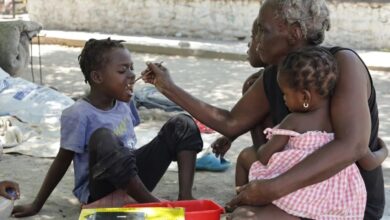Hunger Increases in Quantity and Intensity and Threatens Latin America
Hunger in Latin America and the Caribbean has increased by 30% since 2019, and several countries are already food insecurity hotspots.

Photo: Freepik
LatinAmerican Post | María Fernanda Ramírez Ramos
Listen to this article
Leer en español: El hambre aumenta en cantidad e intensidad y amenaza a América Latina
Acute food insecurity on the planet is expected to increase by 18 points in scale and severity over the next six months, according to a new report by the Global Food Crisis Network. Afghanistan, Haiti, Somalia, and Yemen are at the highest alert level. Meanwhile, El Salvador, Guatemala, Honduras, and Nicaragua are hotspots. Thus, Latin America, specifically Central America, is facing a humanitarian hunger crisis, which will intensify the El Niño phenomenon.
The Global Food Crisis Network is a coalition of diverse international humanitarian and development actors led by the Food and Agriculture Organization of the United Nations (FAO) and the World Food Program (WFP) to address the root causes of food crises and promote sustainable solutions. Its Global Report on Food Crises and Hunger Hot Spots is a global benchmark for understanding which countries have the worst food security and hunger crises and the reasons behind them.
The latest update of this report sets a worrying scenario for the coming six months. Climate change and extreme weather events, as well as conflicts, are exacerbating the situation of food insecurity in the world. If this is translated to the situation of the people, it translates into nearly 200 million people in 20 countries considered hotspots suffering from lack of food. How is this possible in a world where the big food-producing companies and the agricultural market have millionaire profits?
We recommend you read: Oligopolies and Multinationals: Who Profits From Food Insecurity?
"Afghanistan, Nigeria, Somalia, South Sudan, and Yemen remain at the highest concern. Haiti, the Sahel (Burkina Faso and Mali), and Sudan were upgraded to the highest level of concern due to severe restrictions on the movement of people and goods in Haiti, Burkina Faso, and Mali and the recent outbreak of conflict in Sudan," the report said.
Why did Food Insecurity Increase in Central America and the Caribbean?
Several Central America and the Caribbean countries are at high risk of food insecurity. El Salvador, Guatemala, Honduras, and Nicaragua are on the verge of a difficult season due to extreme weather events caused by the El Niño phenomenon. "Seasonal forecasts suggest a high probability of below-average rainfall and above-average temperatures in the June to August period," the report states. For this reason, a drought will likely arrive, and the harvests of beans, corn, and other grains will have significant relapses. Added to this is the high price of food and agricultural products, situations stimulated by the war in Ukraine.
This hunger crisis is compounded by the complicated and unstable political situation in these countries, in which leaders such as Ortega or Bukele commit various human rights violations. Furthermore, these countries have a high percentage of their population living in rural areas. For this reason, internal displacement is expected to increase.
The agencies recommend that plans to mitigate this phenomenon be accelerated, with the promotion of vaccination for animals in the field, installation of irrigation systems, and application of cultivation techniques that can be more resistant to drought. In addition, intensive plans should be deployed to help the population meet their nutritional requirements through cash assistance, meals, and feeding plans, for example, in schools.
On the other hand, there is a call for international cooperation to set its sights on these territories and allocate resources to assist the population. It states it is vital: "To foster regional cooperation and coordination to address the root causes of food insecurity and poverty in the Dry Corridor, including climate change, economic inequality, migration, and social exclusion, and to promote sustainable and inclusive development in the sub-region."
Is Food Security Enough?
While international organizations and institutions talk about food security, many civil organizations and activists question this concept and propose the idea of food sovereignty. This is the case of La Via Campesina, a movement that brings together peasant, indigenous, and small producers' organizations worldwide. They define it as "the right of each nation to maintain and develop its capacity to produce the basic foodstuffs of its people, respecting productive and cultural diversity."
Thus, while food security focuses on ensuring access to and availability of food, food sovereignty seeks to promote the autonomy of communities in decision-making related to their food systems. This is valuable insight, as the current food system is deteriorating the environment and increasing climate change. The situation generated by the war in Ukraine shows how dangerous it is to have a global agricultural system dominated by a few actors.




